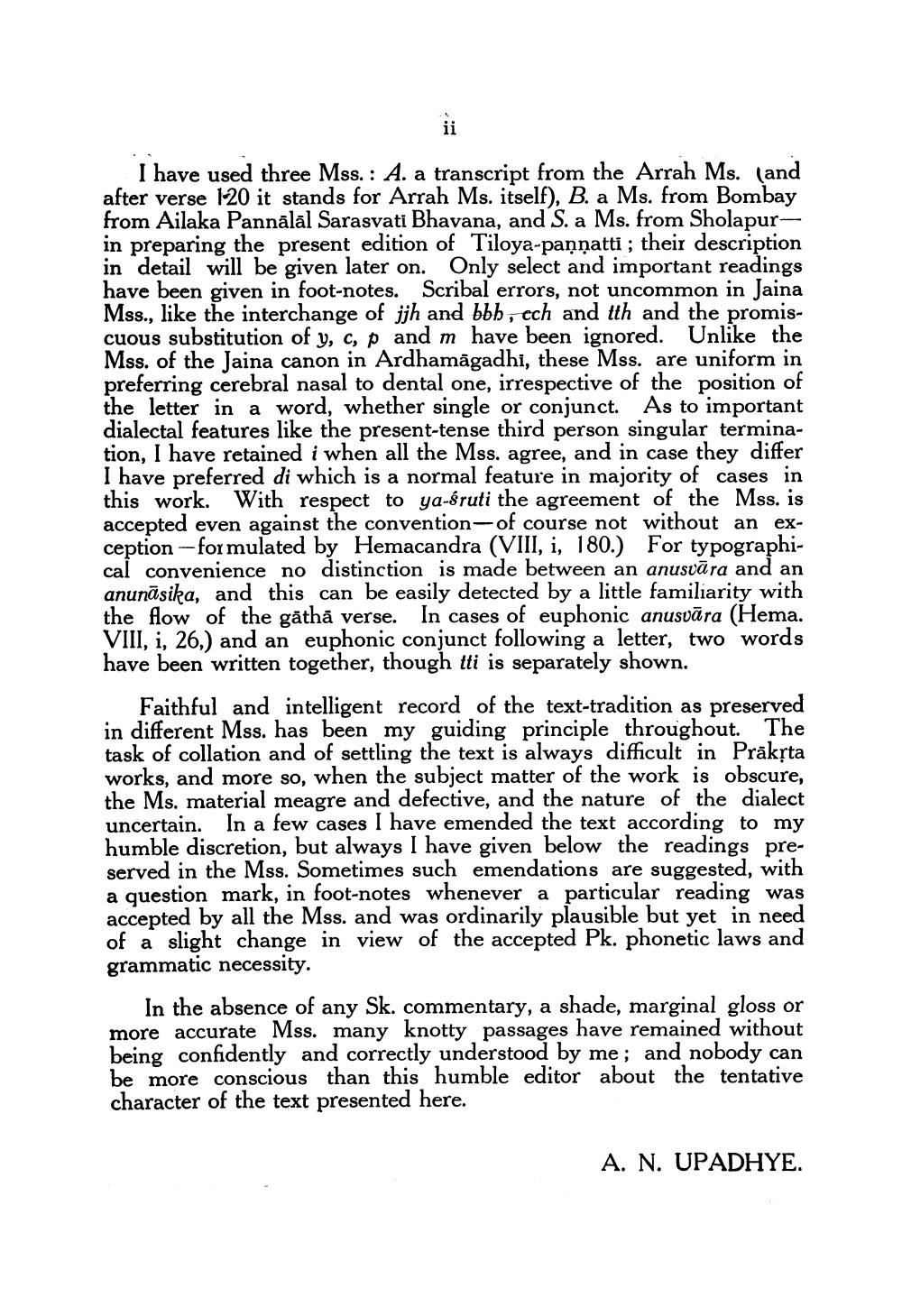________________
ii
I have used three Mss.: A. a transcript from the Arrah Ms. (and after verse 1-20 it stands for Arrah Ms. itself), B. a Ms. from Bombay from Ailaka Pannalal Sarasvati Bhavana, and S. a Ms. from Sholapurin preparing the present edition of Tiloya-pannatti; their description in detail will be given later on. Only select and important readings have been given in foot-notes. Scribal errors, not uncommon in Jaina Mss., like the interchange of jjh and bbb, ech and tth and the promiscuous substitution of y, c, p and m have been ignored. Unlike the Mss. of the Jaina canon in Ardhamāgadhi, these Mss. are uniform in preferring cerebral nasal to dental one, irrespective of the position of the letter in a word, whether single or conjunct. As to important dialectal features like the present-tense third person singular termination, I have retained i when all the Mss. agree, and in case they differ I have preferred di which is a normal feature in majority of cases in this work. With respect to ya-sruti the agreement of the Mss. is accepted even against the convention-of course not without an exception - formulated by Hemacandra (VIII, i, 180.) For typographical convenience no distinction is made between an anusvāra and an anunāsika, and this can be easily detected by a little familiarity with the flow of the gatha verse. In cases of euphonic anusvara (Hema. VIII, i, 26,) and an euphonic conjunct following a letter, two words have been written together, though tti is separately shown.
Faithful and intelligent record of the text-tradition as preserved in different Mss. has been my guiding principle throughout. The task of collation and of settling the text is always difficult in Prākṛta works, and more so, when the subject matter of the work is obscure, the Ms. material meagre and defective, and the nature of the dialect uncertain. In a few cases I have emended the text according to my humble discretion, but always I have given below the readings preserved in the Mss. Sometimes such emendations are suggested, with a question mark, in foot-notes whenever a particular reading was accepted by all the Mss. and was ordinarily plausible but yet in need of a slight change in view of the accepted Pk. phonetic laws and grammatic necessity.
In the absence of any Sk. commentary, a shade, marginal gloss or more accurate Mss. many knotty passages have remained without being confidently and correctly understood by me; and nobody can be more conscious than this humble editor about the tentative character of the text presented here.
A. N. UPADHYE.




